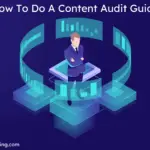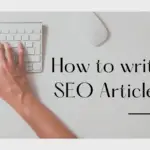Introduction
Most marketers are now emphasizing more on good quality content creation for B2B marketing. But before you start your journey, you must know the route that will guide you to reach the destination. That’s why understanding the ins and outs of B2B blog writing is highly important.
Why is B2B blog writing important? Well, there are tons of reasons, but here are the top four of them:
- Google Likes good quality B2B content and shows your blogs at the top of their search results.
- Good quality blog posts mean you have good knowledge and are smart enough to solve readers’ problems.
- It builds your brand authority
- Converts your audiences into leads and ultimately active customers.
But to achieve all of these, you need a good quality B2B blog that serves the user’s intent and solves their problems. Otherwise, all of your efforts will go in vain.
According to Ahrefs research, 90.63% of blog posts get no Organic Traffic from Google.
Do you want your B2B blog posts to lie in that segment? Then finish this article, take notes and implement the best practices into your B2B blog posts.
Our ultimate guide of B2B blog writing will walk you through every critical aspect, and you will be able to produce top-quality B2B blog posts that both Google and your readers will love.
Closer Look at B2B Funnel
Blogging can do wonders for both B2B and B2C businesses. But if you consider the marketing funnel, there is some significant difference.
Rand Fishkin – co-founder of MOZ and now founder of market research and insights tool SparkToro, explained this topic very well. He said,
“The B2B funnel is very similar to a B2C funnel. In fact, marketing funnels in general work like this: People become aware of a product. They have some consideration for whether it’s something they might actually want to buy. They do some form of comparison against other solutions. They decide to convert or not. Then there’s a retention element.
Retention element is less true in a lot of B2C fields, especially eCommerce one-time purchases. It’s generally more true in the B2B world.”
So, retaining a customer in the B2B market is easier than in the B2C market. But you have to create authority over your customers or potential customers to achieve that. You have to tell them, “I want to do business with you.”
And when customers start doing business with you, you have to maintain authority with thought leadership. And which is the best way to do that? Blogging. Here are some quick insights on B2B blogging.
- Before 2016 B2C businesses used blogging as a marketing tool more than B2B. (Research done by Media examiner.)
- B2B business uses blogging gets 67% more leads (Research done by Hubspot)
- From 2016, 76% of B2B marketers started blogging for their business.
So, if you are still doing B2B marketing, your business is losing a huge amount of potential revenue. If you are doing B2B marketing but not receiving desired outputs, you are doing that incorrectly.
Many of our clients are B2B business owners, and we have helped them to reach the top search results with their targeted keywords. So, read this article from top to bottom, and I am sure you will find the right path to B2B blog writing.
1. The Planning Phase

Planning is the most crucial part of your B2B blog writing. Without a content strategy, you can not deliver the ideal content. You should run a content audit before preparing the content strategy if you have an old website.
We have a dedicated article on how to perform a content audit. This article will help you complete a content audit and create the right content strategy.
Here are the three most important things you should do in this step:
- Create a well researched B2B content Strategy
- Prepare your buyer’s persona
- Do in-depth keyword research
- Keep an eye on your competitors’ content strategy so that you can change your plan if needed.
Remember, B2B blog writing is not like personal blogging, where a blogger just picks a topic or keyword and writes on that topic. B2B blog writing is more of a structured process, and you should have a complete plan before you start writing the first piece of content for your website.
1.1. Pick a topic.
It is obvious that before starting writing, you should pick a topic. It seems a pretty easy thing to do, but ‘Sad but True’ many B2B blog writers get stuck at this point.
How to pick a topic for Business to Business blog writing? The trick is DO NOT overthink.
Solving your readers’ problems is the primary purpose of your blog. So, search for the problems your potential buyers are searching for. Your job is to provide the answer in brief. As a result, your readers will be satisfied and start trusting you.
If you can earn the trust, it’s a matter of time for them to bring their wallet out to purchase your product or service.
For example, you are selling a web development service, write an article on How to design a B2B website. If you are selling power tools like drilling machines, write an article on “how to drill a glass without breaking it.”
Thus you ensure your readers that you have vast knowledge in your industry, and your readers will start trusting you.
Do not focus on your product. Focus on the problem. There is a distinctive difference between blog articles and marketing content. It’s better not to advertise your product or service more in a B2B blog post.
1.2. Find the focus keyword.
Once you decide the topic, it’s time to find keywords people use on Google or any other search engine to find the answer to that question. According to ContentMarketingInstitute.com
“Instead of focusing on the top results position, set goals based on the overall opportunities available on each SERP for your prime keywords.”
Content Marketing Institute
Now the BIG question. How do you find the specific keyword? Mastering keyword research is not an easy job. It takes years of experience. But everyone starts from zero, right? So, how do you do it?
Start with Google.
Write the topic you have selected and read the titles of the SERP results. In most cases, you will find some words in the title. That is the keyword.
But picking a keyword from there will be a very stupid thing to do! Yes, I have used the word “Stupid” intentionally here. Because there are lots of perimeter for a keyword and you have to consider those also.
That’s why SEO tools are handy. You will find lots of SEO tools to find the perfect keyword for your content idea. Some of the industry-leading SEO tools are
- Ahref – They have the second-largest database after Google.
- SEMrush. – User-friendly and has Lots of options.
- Answer the Public (Best for finding questions)
- Uber suggest. (Least expensive but very efficient)
- Keyword Everywhere is an excellent Google Chrome extension that gives you lots of data when you search. It works on youtube also!
Keyword research tools are NEVER FREE! There is no free keyword research tool. So, if you are searching for a free tool, STOP right now because there are none. You can not research and find the perfect keyword using any free version because of limited options. So, buy a premium of any tool or consult a agency. You can get free advice from us. Contact us and one of our experts will contact you.
As finding the best keyword is the key to ranking higher, you can’t expect anyone to provide you free service, right?
If you are new in the industry or an industry-leading company, it’s better to work with long-tail keywords and keywords with relatively high monthly search volume and low competition.
Writing about keyword research in such a short scope is impossible. We have a dedicated article on How to keyword research. Please read this one because without a proper keyword, giving effort to an article is a total waste of time.
1.3. Determining the Goal of your B2B Blog post.
Now we have picked the topic and found the keyword, now what?
Before starting writing the article, determine the goal of your B2B blog post. Not only for B2B, but this is also applicable for any kind of content writing.
Many bloggers put the most effort into styling formatting posts but forget the goal of the content. But GOAL should be a very crucial factor.
What do I mean by goal? That could be brand awareness, thought leadership, etc. Let’s elaborate.
1.3.1.Create Authority with thought Leadership
For example, B2B businesses that produce sophisticated products or work with complex technology should emphasize more on thought leadership. Those companies should produce in-depth technical blogs.
If you can establish yourself as a thought leader, your customers will think you will be able to answer any of their questions or solve any problem they face. This authority will convert readers into your customers.
1.3.2. Brand Awareness
Brand awareness is completely different from thought leadership. These types of blog posts contain many resources for deep analysis on technical topics.
For example, Hubspot, Copyblogger, Ahref, UberSuggest, of them are just software companies. Most of them sell a single type of software. But their blog posts cover many things, and some are not relevant to their software.
But the brand awareness they create with their blog posts convinces users to use their tools when they need one.
1.3.3. How to write Goal specific B2B blog Posts?
If you read top blog posts on SERP, you will see bloggers talk about only one topic briefly. Here are our expert tips before you write a Business-to-Business blog post:
- What problem am I trying to solve in this article?
- What keyword am I targeting?
- Who are my target readers?
- Which answers are readers expecting in this blog post?
- What problem is my content solving?
- Clearly answer the specific question with examples, data, and media.
1.4. Understanding the reader’s intent.
People trust Google more than their spouse: P., And there is a reason behind this. Google understands what you are looking for when you type something on its ‘search block.’ How? Because now Google uses search intent as an important parameter for a blog post to rank.
1.4.1. A Case Study on Reader’s Intent
Let me tell you a real-life example to prove how important search intent is. One of the leading SEO companies, Backlinko, published an article targeting the keyword “SEO strategy.”
The post was in-depth research with many relevant data, graphs, charts, screenshots. And as the post was, many good bloggers linked this post to their article. So, the post had achieved the two most important ranking factors – Well structured and informative article and lots of backlinks.

As Backlinko has a high domain authority so they expected this article would be on the top 3 results. But surprisingly, Google showed this article on the second page of the search result for the keyword SEO strategy.
Then the backlinko team started to find out the problem. And here is what they found.
The title of their blog post was “SEO strategy case study From #6 to #1 in one week.” But the top three results had a title like these
How to create an SEO strategy in 2019
The four pillars of an effective SEO strategy
Developing an SEO strategy.
Then the backlinko team realized the issue, and the reason was “Search Intent.” Google understands when people search for SEO strategy; they are searching for SEO tips.
But what did backlinko do? They wrote about a case study on how a post ranked from number 6 to number 1. It was just a case study. From Google’s point of view, that did not serve the “User intent.”
Backlinko then rewrote the article from scratch, changed the title and Boom! They entered in the top 3 of Google results.
The incident happened in 2019. And Google changed its algorithm that year. They made user intent a very vital factor for ranking. Therefore, a blog post from a high authority domain like Backlinko did not get the desired rank because that did not serve the search intent.
1.4.2. Why is Search intent so Crucial?
We all know backlinks are one of the most vital ‘key factors’ to rank a blog post. Backlinks rank a particular blog post and increase your domain authority, which helps a website rank other posts.
And that’s why sometimes a blog post coming from a high authority website sometimes ranks higher, even though that is not serving the search intent of the keyword.
We hope most of the readers of this blog understand the term ‘search intent.’ But just in case you don’t know-
Search intent is the user’s intent behind the search. In other words, search intent is why you are doing that search on Google.
The problem Google found is that sometimes domains with high authority sometimes rank for a keyword, but that blog does not serve the search intent. Therefore, Google has changed its algorithm (Which Google often does) and made ‘search intent’ a key factor for ranking.
Please find the latest update of Google they use for ranking factors. But that’s not all. Google never reveals its entire ranking factor to the world.
So before writing the article, understand the search intent. How to do that? Google made it easy for you. Just search with the keyword on Google. Read the top 10 articles, and you will know what people are really searching for when writing this keyword.
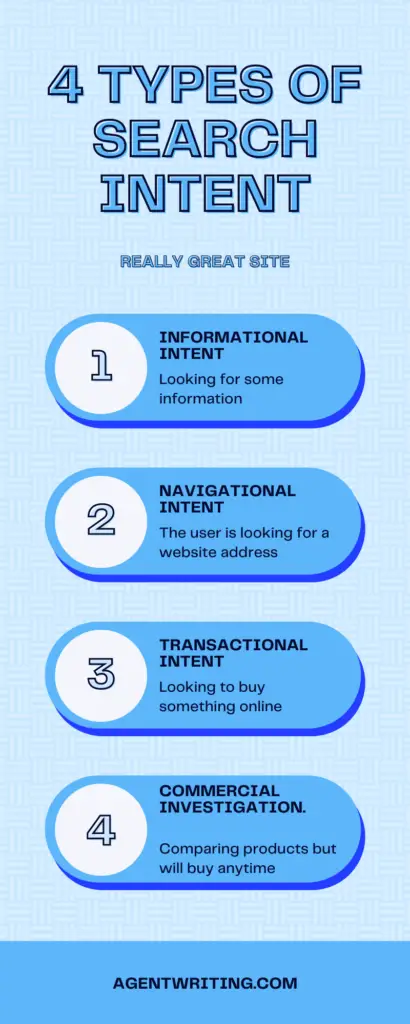
1.5. Determine the length of your content.
In our agency, every new writer goes through a training period. I personally manage many of those training sessions. When I give an assignment to a new writer, the first question I hear is, “How many words should I write?”
What will be the length of the content? That is a question most new, and mid-level experienced content writers ask frequently.
My answer here is that you should focus on the topic and write as many words as needed. But do not write wasted words or do not answer any question using very few words that readers find it tough to understand.
I don’t prefer any fixed word count. You should write as many words as needed to briefly answer the question.
But there is another thing also—search Engine. We have to satisfy the search engine also, right? So, how do we do that?
That is fairly easy. Search for the keyword and analyze the top ten results from the SERP. Count how many words they have written. There are many free word counter tools. You just copy the entire article and paste it on that tool to count the words.
But I personally prefer using a Google Chrome extension. Detailed SEO Extension will not only provide the word count of an article but also give you other important SEO information such as the number of header tags and their types, number of images, etc.
Use this tool and research the top 10 articles from the SERP. Calculate the average words other B2B blog posts use for their writing. And then add 200/300 more words in your article.
For example, if the average number of words are 2600, you should write 2800 2900.
There are other excellent options also. Surfer is an excellent SEO tool for on-page SEO. You can use their “Content Editor” feature to determine the number of words you should write.
The Surfer editor also provides many other information such as NLP and the number of images needed. Surfer makes B2B blog writing easier, and you can try it. We use this tool for our clients and always get excellent results.
1.6. Research Relevant questions in the “People also ask” Section
This is a very important part of your B2B blog writing. You should have a proper guideline before you start writing, and the “People also ask.” Section of Google is a Gold mine for that.
When you write a keyword and search in most cases, Google shows this section. Here Google shows the questions that people regularly search along with the keyword you entered.
So, if you include those questions and answers, that will definitely make your readers happy. If you click on one question, Google will show more questions. List as many questions you can that are related to the keyword.
You can also look into the related search section, which is at the bottom of the SERP page, and list relevant topics in your content.
Apart from satisfying your readers, adding those questions will satisfy the search engine also. Consequently, your B2B blog writing will get an additional SEO boost.
1.7. Create the Outline
Without a proper outline, you can never deliver high-quality content. Many Blog writers start writing the blog without an outline, and in the end, the information gets scattered, and readers don’t find the article useful.
According to Google’s latest update, the structure of your article is very crucial. So, take time when you make the outline. Use H2, H3, H4 tags to structure your blog post.
And always put a Table of content at the top of your blog posts. If you use WordPress, you can do that by simply using a plugin.

A good outline makes your blog content scannable. Remember, B2B blog posts readers are busy people. They look for certain information. If they can not scan the blog post, they will simply leave your site and find a scannable article.
2. The Writing Phase
So far, we have covered the planning phase. Don’t get overwhelmed by the steps I have written in that section. They are common practice, and you will also be able to do that with regular practice and a little patience.
A well-written B2B blog post will rank higher and will bring potential customers to your website. You can not expect that to happen without giving an extra bit of effort. You are not paying Google for this!
Now, let’s talk about the writing section. If you have planned well, the writing should not be very tough.
2.1. Craft your Title
How important is a Title? According to research by Hubspot
Title tags with questions get 14.1% higher CTR
Title tag with POWER WORDS had a 13.9% lower CTR compared to Title tag did not contain power words.
Title with positive or negative sentiment improve CTR by approximately 7%
But do not write clickbait headlines. You might get some clicks, but in the long run, readers will start to hate your websites. So, write a title that triggers an emotion but don’t try to mislead the readers.
The title is the first contact point between readers and you. So take your time and craft your headline that prompts the reader to click.
Though I am not a fan of using tools for crafting headlines, you can use this chrome extension to create a powerful headline.
Here are some of my tips you should follow while you write your headlines:
- Use the keyword as early as possible in your headline (In fact, try to start with the keyword)
- DO NOT write more than 70 characters for your headline.
- Use W/H questions, Numbers in the headline.
- Use power words in the headline (Amazing, Mistakes, Horrific, etc.)
- Use sentiment because people are emotional (i.e., 10 SEO tips that changed my life!)
- Use modifiers such as “2022”, Guide, “Top,” “Best.”
2. 2. Write an Engaging Introduction to hook the readers.
According to Time Magazine, 55% of visitors will read your article for 15 seconds. And another research shows a user takes 8 seconds to determine whether he will read the blog post or not.
So, what you expect from your readers is totally wrong. You have very few seconds to make the reader stay on your page. Therefore, the introduction of a B2B Blog writing is very crucial. If you can not hook your readers in the first 2/3 lines, then you are out of luck (or rather out of skill!);
The reader will leave your page, providing you with a few seconds of a page view and an increment in the bounce rate. And Google hates both while ranking a website.
So, how to write an intro that never fails? Here are our expert tips:
- Start with a snapshot of what your readers are going to learn.
- Give them a big hope. Convince them this blog post will solve their problem in brief.
- Provide a stat or data or any other insight in the opening so that the readers believe you have good knowledge on the topic.
- Don’t be afraid to share your personal experience or a story of yours or a client’s. People love stories, don’t they?
- You can use some funny lines or words to convince the readers that this article will not be boring.
Expert Tips: Don’t forget to use your focus keyword in the first 100 words. It impacts your SEO a great deal.
2.3. Write the Actual Blog.
Now it’s time to play the real game. How do you feel when you get impressed by watching a trailer and get the exact opposite emotion watching the movie? You feel betrayed, right?
That also happens to blog readers. If you give a big hope in the intro, make sure you deliver what you promise properly.
Here are some things you should consider while writing the main body section.
If you don't know how to write an SEO blog then you SHOULD NOT write your B2B Blogs. Please read our guide on How to write SEO articles.
2.3.1. Know your Readers.
In marketing terms, we call it “Buyer Persona.” You should know your readers first. You can call it “target market” or “potential clients.” An identifying buyer persona is a long term process, but for a B2B blog content, you can easily identify that by easily answering the following questions:
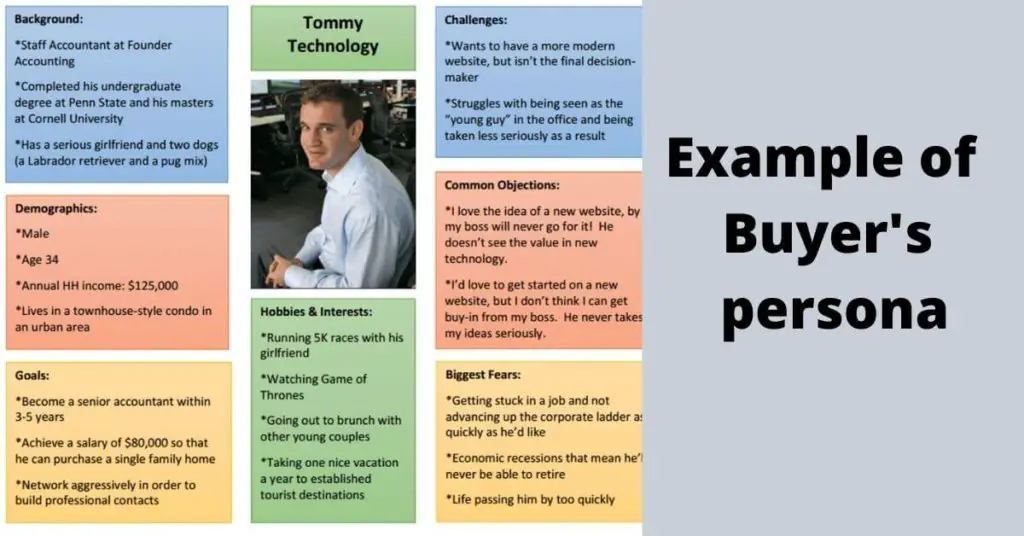
- What industry does the reader belong to?
- What could be their job role?
- What specific skills do they need to do better in their job?
- What type of keywords might they be searching on Google?
- What type of questions do they generally ask?
- Is there any tool that can make them more efficient in their job?
- What kind of topics will add value to their career and personal development?
- What could be their interest outside the job?
- What could be their favorite social media?
I know some bloggers will categorize this section as “Not necessary.” But believe me, it’s very much necessary.
As a B2B blog writing expert agency, we have found knowing the buyer persona always results in high-quality content for the targeted readers. You are writing for B2B business, not for some school students who also could be read by their parents.
When writing for professionals and their professional needs, you MUST know them precisely.
2.3.2. Focus on the Advantages of the Readers.
It’s a very important aspect of especially B2B blog writing. We have worked with many customers who had a good amount of content, but most blog posts talk about the company’s strengths and advertise their works.
As a result, those blog posts get very few page view time and high bounce rates. We identified this issue and rewrote those blog posts, which brought outstanding results.
Always remember, people didn’t come to the page to hear about your company’s profile and praise. They came here to solve a problem. Solve their problem, and you will automatically gain their trust.
Even when writing marketing content, always remember to write what benefits the user will get. Don’t just praise the product or write the features.
People don’t care about what you are; people care about what benefit your product or service offers them.
2.3.3. Maintain your Brand’s tone.
Did it ever happen to you, you see a color and remind of a brand? That is the power of color. Therefore, every brand uses a specific color or color scheme for branding. Likewise, you should also maintain a tone for each blog of your website.
It’s the responsibility of the content manager. Different writers have different writing approaches. Some writers like to use complex industry jargon, and some others like to use an easy language.
It’s the responsibility of the editor and the manager to help them express their own expertise but maintain the unique style of other blogs. This tone will help your readers to realize that this blog post came from your blog.
Editors and content managers should read other blogs, find out the tones used there, and implement that style in future blogs.
Every industry has a certain tone. For example, cyber security blog posts and motor manufacturer blog post tone will never be the same.
Another important thing is to avoid using acronyms you frequently use inside your industry. Though you are writing for industry insiders, you should be as elaborate as possible. Because you never know the knowledge level of the reader.
Use the full form and then write the acronym. Here are some examples used in B2B blog writing:
- Enterprise resource planning (ERP)
- Internet service provider (ISP)
- Design for manufacturability (DFM)
- Printed Circuit Board (PCB)
- Multifunction printer (MFP)
- Enterprise content management (ECM)
- Engineering change order (ECO)
- Bill of materials (BOM)
- Search engine optimization (SEO)
- Growth-driven design (GDD)
2.3.4. Some Basics you should follow
Formatting your content is as important as your writings. Here are some basic rules you should follow:
Briefly write a topic. Don’t worry about the competitor’s blogs. Just write as many words as you need.
- Use easy-to-read language.
- Write a short paragraph. DO NOT write more than three sentences in a paragraph.
- Do not write long sentences. 20-25 words at most.
- Write like an expert. Take authority.
- Do not edit while writing.
- Give someone outside the industry to read the blog. Did he understand it? If not, you should consider the article is too hard to read.
- Use the Hemmingway app to find out the readability.
2.3.4. Use Focus keywords and Synonyms in your Subheading.
Google takes the headers very seriously. Google first looks for the keywords in your heading and subheading. So, use the focus keyword and synonyms in your subheading.
Google appreciates synonyms. So, Do not just depend on the focus keyword. You should use synonyms also. Distribute the keyphrase and synonyms in H2, H3, H4, all types of headers.
2.3.5.Ideally, format your B2B Blog writing.
On average, people can not concentrate on an online blog for more than 8 seconds.
That’s why you should ideally format your B2B blog writing so that you can keep the readers engaged. And when I am talking about formation, I am not only talking about distributing your H2, H3, or other header tags. There is more you should do.
Here is what Google looks for while crawling a blog post:
- Preparing table of content
- Author Information
- Alt Texts
- Stylization
- And Media Breaks
The table of content helps readers to scan your blog post. Author information adds credibility to your content. Author information is also essential to improve your EAT score on Google.
Alt text improves the image search visibility. Stylization and media breaks are crucial to make your readers stay on the page. Here are some tips on how you can use breaks and pauses in your article:
- Use numerical lists and bullet points.
- Think about using a special block of texts.
- Image videos are also a great way to break the article.
- Do not overdo it with bolding.
So while writing your blogs, always keep in mind the 8 seconds rule and use breaking point or pause at regular intervals.
2.3.6. Use relevant Graphs, data, and Charts.
I talked about the importance of pauses or breaks in your B2B blog writing in the earlier section. Images styling these are good ways to do that. But If you can use graphs, data, or charts, they serve two purposes.
First, they work as a pause and break. Second, it adds credibility to your blog posts. Readers become impressed, and that also impresses the Google crawler.
So, always try to find relevant data, charts, graphs and try to incorporate them into your article.
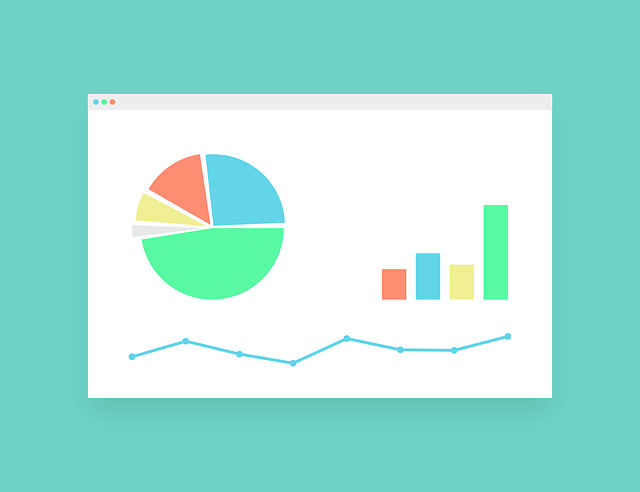
2.3.7. Inform the readers about your customers and business area.
Blog writing is not about educating your readers only. It’s a great passive way of marketing (In fact, that is your real purpose, right?)
So, I always say B2B blog writing should combine content writing and copywriting skills.
Inform readers about your existing customers and business area. If you are writing a blog for a specific country, try to mention some famous names in that country that add value to your business.
But don’t just write the names of your clients or your business area in a casual manner. You should incorporate those in a tricky way that the reader does not recognize you are writing them for marketing purposes.
Here is a famous joke in the field of sales.
Who is the best salesman?
The person who can sell a fridge to an Eskimo.
You have to be that smart while marketing for your company in your B2B blog writing.
2.3.8. Use your customers’ Feedback
That is another key factor that brings trust to the readers. Try to incorporate your customers’ feedback when possible in your article. When we visit Amazon to buy a product, we read buyers’ feedback. B2B clients are also human, and they also feel safe when other customers praise the product (In case this can be your company).
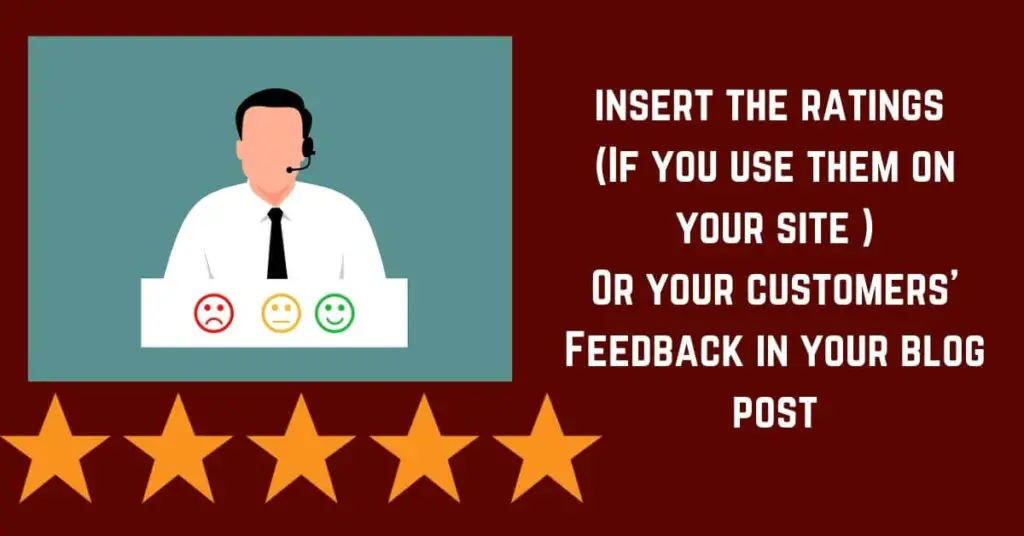
This is an optional choice. DO NOT forcefully incorporate customer feedback. Use if only that comes naturally. Otherwise, forget it.
3. Prepare Images
Famous advertising Executive Fred R. Barned once told (We all know the quote but not the person who told it)
“One picture is worth one thousand words.”
Fred R Barned
So, Do not just download some stock images and post. Take your image very seriously.
Especially while you are writing a B2B blog, it’s best to use your own images. Real product images, factory images, office space images are the things that add additional trust to your blog – both from the reader and Google’s perspective.
It’s better to take help from a professional graphics designer to prepare your images. If your company doesn’t afford it or you are an in-house freelancer, you can use Canva to prepare your images. The pro version is not very expansive, considering their free image and illustration.
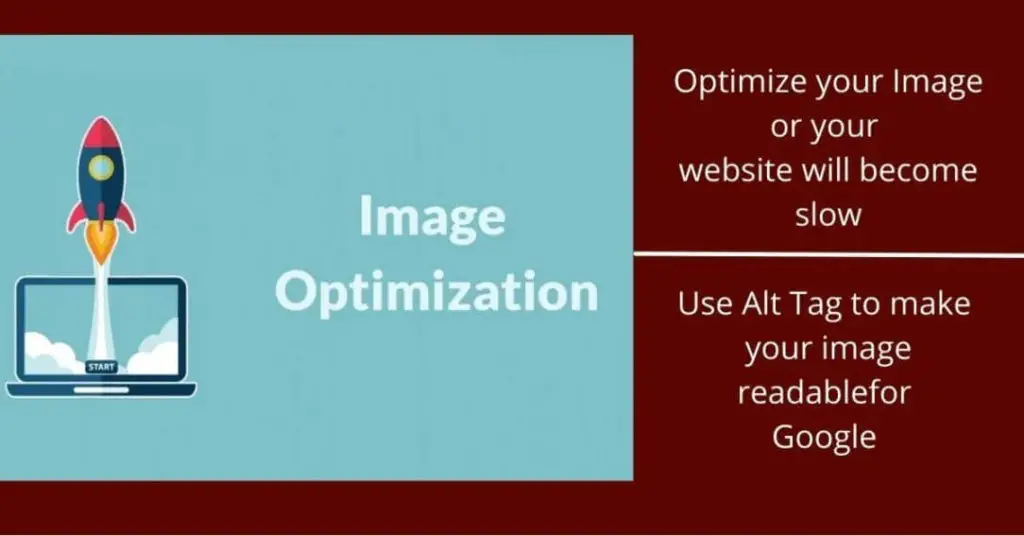
Here are a few things you should consider before posting an image:
- Make sure you properly optimize your image. Use photoshop or TinyPng to compress your image.
- Use the JPG version, or if your web server allows you can use the Webp version because those formats are compressed in size.
- Try to use your brand color on the image.
- Use consistent fonts.
4. Optimize On-page SEO.
Everything I have discussed earlier in this post of B2B blog writing will go in vain if you don’t do the on-page SEO perfectly.
I hope you all know what On-page SEO is. Just in case you don’t know, On-page SEO is to optimize your content following the Google guideline so that Google crawlers understand the context of your blog post and you rank higher.
Here I include some of the best practices of on-page SEO. We always do that for our B2B clients in our agency before publishing a blog post:
- Include your Keyword in your title (Try to use it at the beginning of the Title)
- Include Your Keyword In Your URL
- Use Short URLs (From Ahref – Short Urls get more positive SEO score from Google )
- Embed Title Tag Modifiers
- Use Your Keyword Once In The First 100 Words or at least in the first 150 words.
- Use Your Keyword/Synonym in H1, H2 or H3, H4 Tags.
- H1 Must be used Once in an article. An article will contain only one H1 tag.
- Optimize Images—alt tag – Description.
- Use Tinypng to resize/compress an image.
- For bulk image resize https://bulkresizephotos.com/en
4.1. Properly Use your LSI and Synonyms
LSI means “Latent Semantic Indexing.” Google incorporated this process to identify the best article for the readers. Let me clear you with an example. If you are writing on “How to make coffee,” you will use milk, sugar, coffee, and cups in the article.
Those are LSI keywords. You must use LSI keywords, and that is a very important ranking factor for Google.
Incorporating synonyms is also appreciated by Google. So, try to use synonyms for your primary keyword.
Here is an example of synonyms for “how to start a blog” could be:
How to launch a blog
Starting a blog
How to create a blog
How to set up a blog on WordPress
https://lsigraph.com/ is a great platform to find LSI keywords.
4.2. Use External Links
Make sure to link out to 5-8 authority sites in your article. Those links show Google that my content is well-referenced and trustworthy.
Use Internal Links – Whenever you publish a new piece of content, Minimum 2-5.
Use related anchor text. That means the anchor text must match the topic of the content.
DO NOT use anchor the main keyword
Bad Practice – Please go to this link to learn on-page SEO
Good Practice – Here is an article on On-page SEO
Some additional On-page SEO tips
- Keywords Must Place – Title, URL, First Paragraph(within 150 words), and Last Paragraph.
- In the case of long-tail keywords, write another header with the same keywords.
- Do not write a sentence of more than 25 words. 15-20 words are standard.
- Do not write a para more than 3 lines.
- Do not write over 300 words under a single Heading.
- Keyword density should be between 1-2%.
5. Double-check the Grammar mistake and Readability.
5.1. Use Grammarly
No one likes a blog with wrong grammar or spelling mistakes. That’s why your blog should be free from any type of grammar or spelling mistakes. In the early days, this was a tiresome job because we had to rely on human knowledge and experience for proofreading.
But now, advanced tools like Grammarly have made it easy. You can use Grammarly as a Google Chrome extension, or you can use that in your MS word software.
Grammarly does many things such as identifying grammar mistakes, spelling mistakes, finding out potential wordy words, Monotonous sentences, and many more. In addition, you can choose your writing style (US, UAE), writing tone, and Grammarly will adopt that
Grammarly has a free version, and you can fix basic mistakes with the free version. But the premium version gives you many more. Though the price is slightly high, considering you can use one license in 5 devices makes it not that expensive.
Grammarly also has a plagiarism checker. I am not a fan of that tool. So, do not rely on their plagiarism checker.
For readability check, you can use the Hemmingway app, and if you use WordPress, Yoast SEO also gives readability suggestions and scores.
Expert Tip: Google Doc also identifies some crucial grammar and spelling mistakes. So, after Grammarly check, you should also check your B2B blog writing with the Google Doc and correct mistakes. I am telling this from personal experience.
5.2. Manually Check your B2B Blog Writing
It doesn’t matter which AI is working behind an application, the human brain is smarter than them. And language is a very complicated thing. Therefore, you should consider a manual check before publishing.
My suggestion is to take a break after you finish your content. Come back after a few hours and read as if you didn’t write it. I bet you will find many silly mistakes that the software could not find.
6. Write an Engaging Conclusion
There is a proverb; “All’s well when the end’s well.” You set a goal for your B2B blog writing. But if the blog does not make the reader take any action, what is the purpose of all the hard work?
Yes, bringing visitors is crucial, but conversion is more crucial. Because at the end of the day, that is the main goal of a business.
That’s why you should write a conclusion that convinces the reader to take action. It could be giving their email to subscribe, sending an inquiry, or going to a landing page. Here are some expert tips from me:
- Provide a recap about what you just shared in the blog post.
- Invite readers to click on a link or download any resource to learn more on this or relevant topic.
- Add a link to your contact page and encourage readers to send a message.
- If your blog section has a comment option, encourage readers to comment.
In conclusion, find a creative way to finish the blog post. The conclusion does not mean the finishing of the article. Your target is to send the reader somewhere else or complete an action. DO NOT make it a college thesis paper.
7. Add a CTA
CTA means Call to Action. This is why everybody writes online. So, never finish your B2B blog writing without placing a proper CTA. Here are some tips from me for placing CTAs
- Place an offer that naturally ties to the topic you are writing on.
- Though it’s not your responsibility, make sure the CTA is visually appealing.
- Use inline CTA in the first half of your blog. That can help you to gather more leads.
8. Don’t Forget the Meta Description.
Meta Description can complement your title tag and give you an extra SEO boost. The meta description can say those words you can not tell in your title. But here is a fact many writers do not know about meta description.

- According to Ahrefs, Google rewrite meta description 62.78% times
- But there is still a 37% chance to convince the search results!
How to write an excellent meta description? Well, there is no magic trick. Excellency has no boundary. But here are some tips you should follow while writing your meta description:
- Always think meta description is supplement information of your title tag.
- Always match the search intent.
- Try to put CTA in the meta description
- Include your keyword in the meta description (Not more than 2 times)
- If it meets the niche, you can use emoji
- Write unique meta for each page.
Conclusion
It is absolutely okay to admit that you are not a born writer. Writing is a skill that you can learn. And writing is not anything Abstract; there are certain rules to follow. Even the greatest storytellers use tricks to engage readers.
And when it comes to SEO writing, there are many more technical factors connected. The market is highly competitive, and Google will give a higher rank to a blog with additional effort. So, take every piece of advice on this page very seriously and practice everything.
We know that it could be an overwhelming task for newcomers or business professionals. So, if you need any assistance with your B2B blog writing, we are open to giving you free consultancy. Also, you can ask for a quotation.
We have helped hundreds of B2B businesses all over the world. We will be more than happy to assist you.

